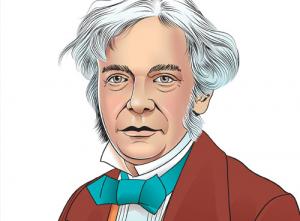Birthdays
Steve Mitnick is President of Lines Up, Inc., Executive Editor of Public Utilities Fortnightly, and co-author of a new book, “Front Lines to Power Lines,” and before that the author of “Women Leading Utilities, the Pioneers and Path to Today and Tomorrow,” “Lewis Latimer, the First Hidden Figure,” and “Lines Down: How We Pay, Use, Value Grid Electricity Amid the Storm.”
Humphry Davy was the world's most famous scientist in the first decade of the nineteenth century. In 1807 and the following year, Davy had discovered as many as nine of the periodic table's elements, barium, boron, calcium, chlorine, iodine, magnesium, potassium, sodium, and strontium. But what really brought Davy fame was his discovery a few years earlier of nitrous oxide's astonishing properties. There was enormous interest worldwide in the weird euphoric effect when people inhaled what he called "laughing gas."

Davy started giving his extraordinarily popular lectures and demonstrations on science in 1801, at the prestigious Royal Society. Since he fervently believed that women should participate equally in science, a truly unusual opinion then, his audiences included many women, including Jane Marcet.


